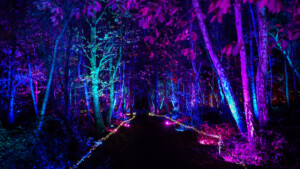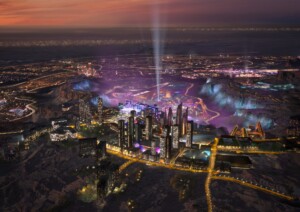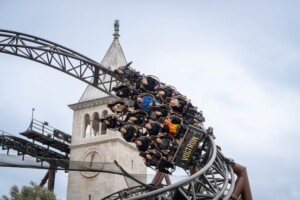Social media engagement has become an integral part of the attraction experience. Whether as a platform to share photos from a park, announce locations to others, or engage with a theme park directly, social networks amplify both the anticipation and  memories of our visits.
memories of our visits.
A Park Database feature
By Wonwhee Kim, Founder of The Park Database (left)
In this piece, we wanted to explore the relationship between physical and ‘virtual’ visitation to a park – if any. Which attractions were the most beloved, or ‘liked’? Where have the most people checked in virtually?
There are many ways to examine ‘virtual’ visitation and engagement through social media, but the parks examined in this study are located all over the world, and focused on an appropriately global social network – Facebook.
With more than 1.3 billion monthly active users, more than 800 million users who log in every day, and more than 80% of activity originating outside of the US and Canada, Facebook is a truly global social network. We examined two metrics that are available on every attraction’s Facebook Page: ‘Likes’ and ‘Were Here’. The distinction is as follows:
- Likes: Any Facebook user who clicks the ‘Like’ button of a Facebook Page goes towards the total number of Likes.
- Were Here: These are users who updated their status as being “there” at the park, tagging themselves or others in status messages, photos, or other uploaded media with the location.
Both measures are a running total for each park, ever since the park page was created. Some of our observations follow the charts below:


- Not surprisingly, Disney is indisputably the most liked (beloved) park chain, appearing at the top of the charts for both ‘Likes’ and ‘Were Here’s.
- There is an interesting pattern here in user behavior, as the number of ‘likes’ a park receives does not seem very correlated with the number of virtual check ins (‘were here’). While many users announced themselves as having visited Orlando-based Disney parks such as Animal Kingdom or Hollywood Studios, the number of users who actually ended up later ‘liking’ these parks were far fewer in number. In a reverse pattern, Everland in Korea registers at a 4 ranking in the number of likes, but is at the bottom of the list for actual ‘were heres’.
- In an answer to our original question, the relationship between actual physical attendance and the ‘virtual’ visitation to a park is weak. Facebook check-ins (Were here) average only 30-50% of single-year attendance at most Southern California-based theme parks, even though check-ins are actually a running total of all people who “were there” since the Facebook page was established.
- There are country differences. The Universal and Disney parks in Singapore and Japan have much fewer ‘visits’ compared to their actual size and physical attendance than other parks. Some of this may be due to lower penetration rates of Facebook in these countries. For example, Japan has a Facebook penetration rate of approximately 20%. But how to explain the engagement patterns with parks in South Korea, which has a Facebook penetration rate that is not much higher (27%)?
- There are also notable regional differences even within the same type of park. For example, Six Flags Magic Mountain has a much higher proportion of virtual visitors to actual annual attendance (58%) than Cedar Point (22%).
These observations may hold lessons for park operators who seek to track and engage visitors through social media. First, there is no one-size-fits-all strategy. Users interact with various parks in different ways, even on the same network; i.e., as in the distinction between ‘likes’ and “were here”s, or in differences between countries. Second, it may be the case that many of these differences are due to the strength of the individual operator’s social media program. If that is the case, however, some parks appear better at this than others. Could it be the case that some parks have a base of attendance that is driven solely by the strength of the park’s social media engagement?
Frankly, many of these observations surprised us. What do you see?















